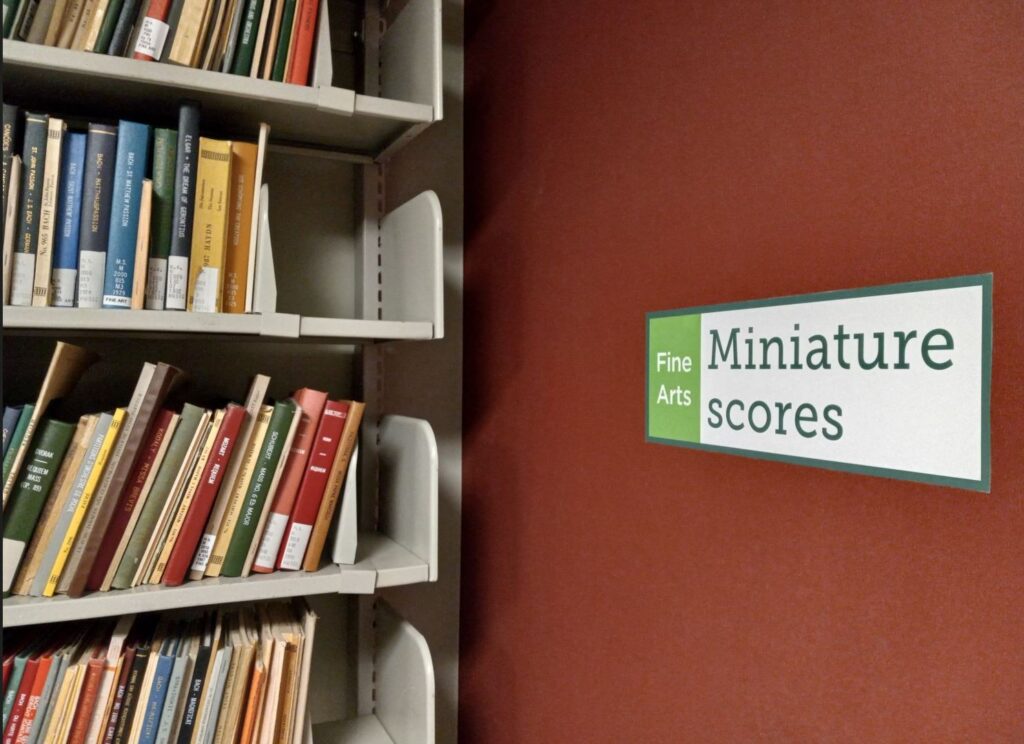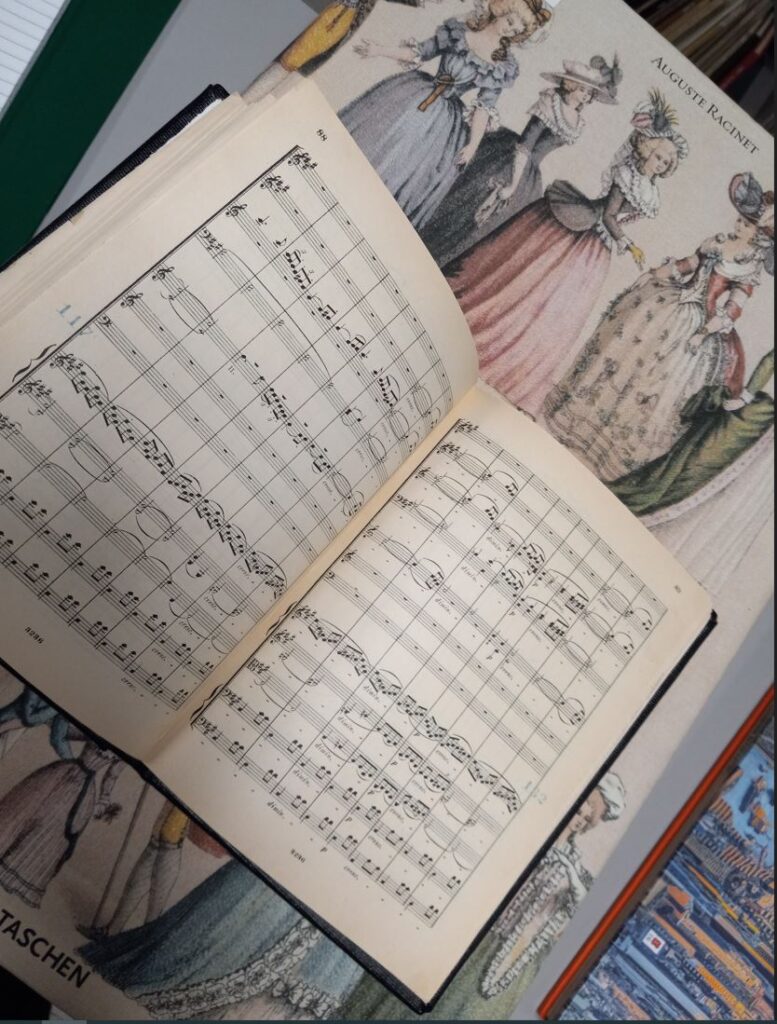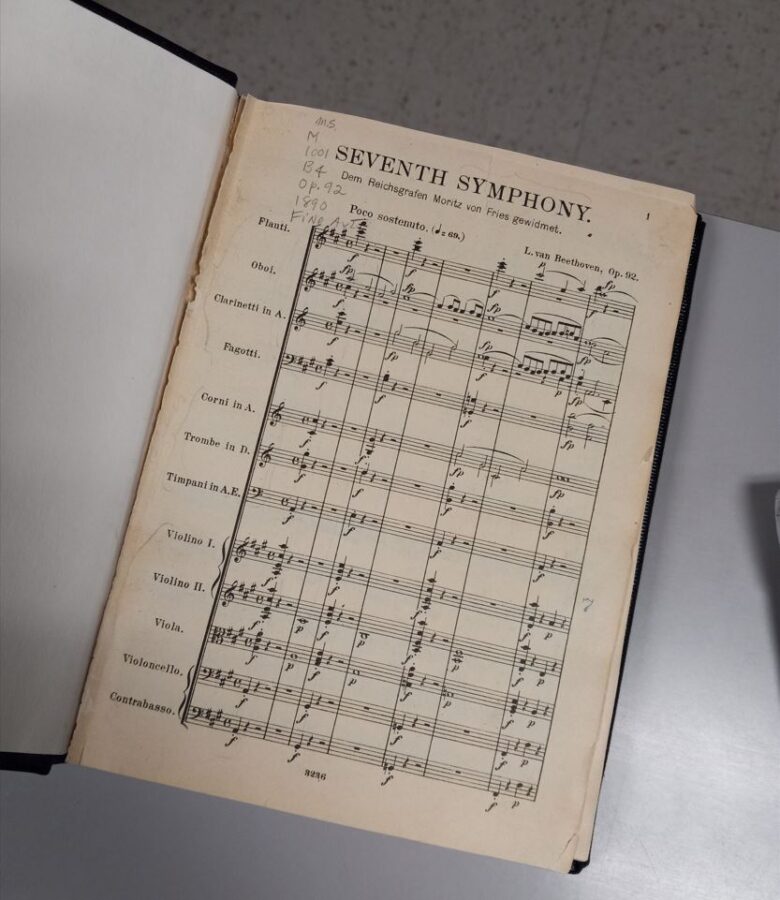
The Binghamton University Libraries Fine Arts Collection holds a beautiful array of nearly 3,800 miniature scores. At only seven by five inches in size, the diminutive bound books have a special purpose in the field of music. According to the Music Library Association, these pocket-sized print volumes were popularized in the early 1800s by music aficionados who would use them to follow along during live performances. The small stature of miniature scores lends to easily tucking them discreetly into a musical program or playbill. David Floyd, Cataloging librarian and Subject Librarian for Music and Judaic Studies at Binghamton University Libraries, personally enjoys using miniature scores to identify nuances in orchestral performances.

Reading music as it is played adds another dimension to the listening experience. The concept of “reception history” is another fascinating way that scholars of music choose to use miniature scores. When pursuing in-depth historical musicological research on a composer, a scholar may use a miniature score to parse out elements noted by the critics of the time. Also, how a miniature score is published and by whom can provide insight. For example, the paper and printing plate quality help narrate the story of a particular composition and its influence. The oldest Libraries’ owned miniature score is a hard bound copy of Beethoven’s Seventh Symphony that was printed in 1890. It is marked: “Dem Reichsgrafen Moritz von Fries gewidmet, L. van Beethoven, Op.92” which translates roughly as: “Dedicated to the imperial court of Count Moritz von Fries.”
The collection grows more slowly than its full size counterparts, however, print music is widely preferred by many musicians to electronic for the ease of making and sharing annotations. The Libraries’ dedication to music is evidenced in the Fine Arts Collections’ music related monographs, digital audio databases and long play records while continuing to purchase print material.






